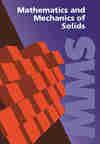Topology optimization of continuous fiber-reinforced composites using Shepard interpolation and its design variable reduction
IF 1.7
4区 工程技术
Q3 MATERIALS SCIENCE, MULTIDISCIPLINARY
引用次数: 0
Abstract
In the design optimization of fiber-reinforced composites, spatial material discontinuity is considered intractable within the manufacturing reality imposed by advanced technologies. This paper presents a topological optimization framework based on truss-like material to design composite structures with continuous fiber. Specifically, the fiber morphology at the scattered design points, which controls the orientation and volume fraction, is taken as design variables. Using the Shepard interpolant scheme, the fiber morphology at any given computational point is interpolated by scattered design variables within a certain circular influence domain. The employed interpolation inherently ensures the spatial continuity and range-restricted of the physical field in an element-independent manner. Since separating the design variable field and analysis mesh on two independent sets of points, this method is well suited for using a sparse design variable field. The computational savings are compelling due to the reduced number of design variables without significantly restricting the design freedom. Numerical instability such as checkerboard and mesh dependencies vanished as no intermediate densities are suppressed in optimization. The continuous fiber-reinforced composites (CFRCs) in the form of truss-like continua are ready to be manufactured with the aid of a simple post-processing. Several numerical examples are investigated to demonstrate the feasibility and effectiveness of the proposed formulation and numerical techniques.利用谢泼德插值及其设计变量减少法优化连续纤维增强复合材料的拓扑结构
在纤维增强复合材料的优化设计中,空间材料的不连续性被认为是先进技术带来的制造现实中难以解决的问题。本文提出了一种基于类桁架材料的拓扑优化框架,用于设计具有连续纤维的复合材料结构。具体来说,将控制取向和体积分数的分散设计点的纤维形态作为设计变量。利用 Shepard 插值方案,在一定的圆形影响域内,通过散射设计变量对任意给定计算点的纤维形态进行插值。所采用的插值方法从本质上确保了物理场的空间连续性和范围限制,且与元素无关。由于在两组独立的点上分离了设计变量场和分析网格,这种方法非常适合使用稀疏设计变量场。由于减少了设计变量的数量,在不明显限制设计自由度的情况下节省了大量的计算量。由于在优化过程中没有抑制中间密度,因此诸如棋盘格和网格依赖性等数值不稳定性消失了。只需进行简单的后处理,即可制造出桁架状连续纤维增强复合材料(CFRC)。通过对几个数值实例的研究,证明了所提出的配方和数值技术的可行性和有效性。
本文章由计算机程序翻译,如有差异,请以英文原文为准。
求助全文
约1分钟内获得全文
求助全文
来源期刊

Mathematics and Mechanics of Solids
工程技术-材料科学:综合
CiteScore
4.80
自引率
19.20%
发文量
159
审稿时长
1 months
期刊介绍:
Mathematics and Mechanics of Solids is an international peer-reviewed journal that publishes the highest quality original innovative research in solid mechanics and materials science.
The central aim of MMS is to publish original, well-written and self-contained research that elucidates the mechanical behaviour of solids with particular emphasis on mathematical principles. This journal is a member of the Committee on Publication Ethics (COPE).
 求助内容:
求助内容: 应助结果提醒方式:
应助结果提醒方式:


